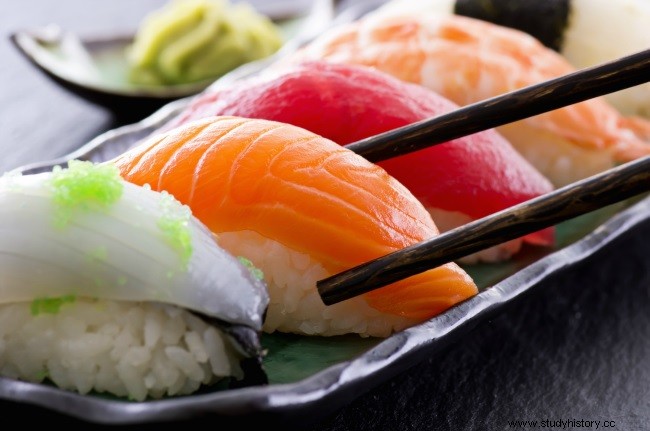
On a busy day, lack of time for a A full meal is usually replaced by some type of food that replenishes our energy. Without any kind of socioeconomic distinction, fast food has already served as a palliative for various types of people. For many, this practice signals a particular trait of our times, in which the time to eat has taken on another meaning. But, after all, where did this idea of eating fast food come from? ?
Logically, this improvised way of satisfying hunger happened at different times in our history. Generally, people believe that this type of food is an invention of the American food industry , today so well known for the multinational chain stores that are easily located in the large urban centers of any country. However, the "miracle" attributed to Uncle Sam's children of the land seems to have another candidate for its authorship .
In the first decades of the 19th century, the city of Tokyo , then known as Edo , had its streets crowded with very busy people. With the passage of time, taking advantage of that potential lode that was taking shape, several stalls spread through the streets of that city offering tasty dishes that are easy to prepare and low cost. Among the Japanese, this type of dining establishment became known as yatai. .
According to some researchers, it was in the hustle and bustle of one of these yatai that the ingenious cook Hanaya Yohei had the brilliant idea of reinventing the techniques of preparation of an old dish of Japanese cuisine. In this first course, a type of “ancestral sushi” , used rice as a kind of preservative for raw fish. Years later, rice was consumed together with fish, giving rise to namanarizushi .
The great idea attributed to Hanaya was to season the rice with vinegar and serve it rolled up with other types of stuffing, such as boiled vegetables or raw fish. For a final touch, the entire mixture was rolled with an edible seaweed-based sheet called nori. and served with a dash of wasabi (a type of root) and ginger. In this way, the popular sushi would have been invented and, with Japanese immigration, spread to the four corners of the world.
